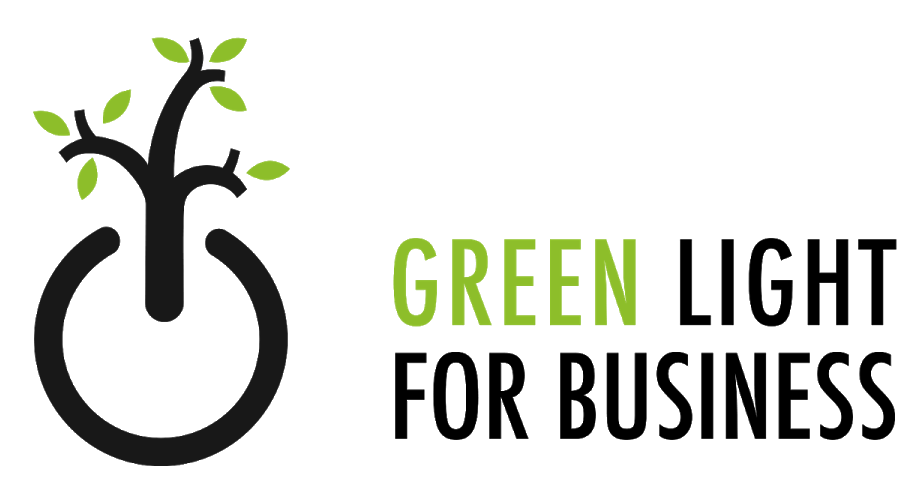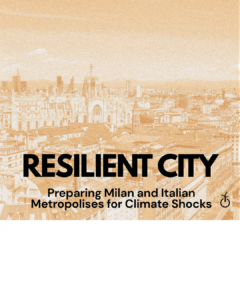Water is the lifeblood of all our ecosystems: it’s freshwater systems that power and allow them to thrive, the single natural resource that we will always have to rely on for our survival. It’s also a resource that is greatly impacted by climate change – actually, most of the negative effects that climate change causes come down to disruptions of our freshwater sources, and the supply available to us.
Over the past decades, water insecurity has gone down, with the number of people not having access to clean water falling by more than 400 million in the last twenty years. The picture looking forward presents instead a downward trend. As many of the water systems we rely on become compromised and are put under stress, with rising consumption rates together with a growing global population, we face the worrying possibility that water shortages will become an increasingly common phenomenon. Thus, water security has become one of the most important steps to take in our path to sustainable development.
Water Scarcity: Outlook and Causes
Only 3% of the world’s water is freshwater, the one we use to cover all our needs. Of this, only a part is accessible to us through terrestrial water storages, which include groundwater aquifers, soil moisture, snow and ice. This supply has dwindled over time, at a rate of one centimeter per year.
Non-viable freshwater resources have also suffered recently: glaciers and snow covers have shrunk over time, reducing water availability in all the places that have previously relied on melted water to at least partially supply them during the warmer months.
The major cause is one only: climate change and the impact human activity has had on the delicate balance of our environments.
Indeed, the rising temperatures have led to the melting of ice sheets and glaciers, which cause sea levels to rise. The latter has distressing effects on groundwater sources that suffer salinization and thus can become unsuitable for human consumption.
Freshwater quality is also affected by climate change through warmer water temperatures and increased floods, which can only worsen the incidence of water pollution.
The higher temperatures also increase the humidity capacity of our air, increasing the occurrence of extreme water-correlated events such as heavy rains, droughts and dry spells. These hazards are naturally the cause of many damages, especially in the agricultural sector: many crops have decreased in quality and yield, while also requiring additional freshwater due to insufficient rainfall. At the same time, other places instead experience water-related disasters like floods which similarly destroy crops.
Water Conservation: Practices, Strategies, Sectors Involved
Finding solutions to the challenge of water scarcity requires the effort and collaboration of multiple actors in our society, from the governing institutions to the corporations involved in sectors most affected and most responsible for the phenomenon.
In the private sector, businesses should be taking steps to assess their water usage and the possible negative externalities its abuse could have on the communities involved. Corporate water stewardship aims to pursue water efficiency practices throughout the supply chain and all the operations of the corporation, from the manufacturing facilities down to the places where the raw materials are grown or extracted.
But reducing waste isn’t enough: sustainable development includes a proactive approach to choosing and investing in technologies that will allow us to reduce our water use, protect that which we already have, and find alternative sources – the right management practices.
Businesses can adopt practical measures to save water, such as fixing leaks promptly, installing water-efficient fixtures, optimizing irrigation systems, reusing water where possible and educating employees about water conservation.
Sectors that are most interested in water scarcity and sustainable management practices are agriculture, the food industry, and the textile industry.
As an example, agriculture makes up up to 70% of freshwater needs in developed countries, and up to 90% in developing ones, mostly to irrigate crops and feed livestock. It is also one of the worst victims of climate change, as extreme events and rainfall patterns tremendously affect yields. Practices to implement in the sector would include, for instance, crop rotation, drip irrigation and other advanced irrigation systems. More radically, we may need to rethink what kind of crops we grow and consume regularly and the role that meat has in our diets, considering the astonishing quantity of water required to grow animal feed and sustain livestock.
Global organizations are participating in this battle through multiple types of initiatives. Two good examples are the CEO Water Mandate and the Women + Water Collaborative.
The CEO Water Mandate is a partnership between the UN Global Compact and the Pacific Institute. Its mission is to advance corporate water stewardship and build a water-resilient future convincing companies to collectively address water challenges through action.
The Women + Water Collaborative is an initiative launched by The Water Resilience Coalition (WRC) in India. This project aims to improve access to clean water and sanitation while empowering women in local water solutions.
Student and Community Action for Water Sustainability
Water scarcity is a growing global concern, and its effects are increasingly felt at both local and international levels. While governments and large organizations play a crucial role in managing water resources, students and communities are at the heart of grassroots movements for water sustainability. Local action not only raises awareness but also drives significant changes in water conservation, management, and education.
The Role of Students in Water Sustainability
Students, as the leaders of tomorrow, have a unique opportunity to create long-lasting impacts through education and innovation. Schools and universities around the world are becoming hubs for sustainable water initiatives, driven by the enthusiasm and creativity of young people.
- Awareness Campaigns and Education
Students can use their voices to raise awareness about the severity of water scarcity. Organizing workshops, seminars, and campaigns on water conservation encourages peers and community members to rethink their water usage. Simple actions like reducing water waste, promoting the use of water-efficient appliances, and understanding local water challenges can be the starting points of these efforts. - Innovative Solutions
Many students are taking the initiative to develop new technologies or enhance existing ones to address water scarcity. Innovations in water purification, rainwater harvesting, and greywater recycling have come out of student-led projects. Encouraging STEM (Science, Technology, Engineering, and Mathematics) education focused on sustainable solutions can empower students to invent technologies that ensure more efficient use of water resources. - Sustainable Practices on Campus
Colleges and universities can be models of water sustainability by implementing eco-friendly practices. Installing low-flow fixtures, reducing landscape irrigation, and using recycled water for non-potable purposes are some ways schools can lead by example. Students can organize sustainability clubs to push for these changes, influencing administrative policies and helping their schools reduce water footprints.
Community-Led Efforts for Water Conservation
Communities are also critical players in the fight against water scarcity. Grassroots movements allow people to take control of their local water resources, fostering a collective responsibility for conservation and sustainability.
- Community-Based Water Management
In regions prone to droughts, community water management programs have been successful in pooling local knowledge and resources to manage water more efficiently. These programs often involve constructing rainwater harvesting systems, restoring watersheds, and monitoring groundwater levels. - Advocating for Policy Change
Communities can push local governments for water-conscious policies. Lobbying for stricter regulations on water usage, promoting the restoration of natural water bodies, or advocating for affordable access to clean water can have a long-term impact on water security. Grassroots campaigns ensure that the voices of everyday citizens are heard in larger discussions about water rights and sustainability. - Collaborative Conservation Efforts
By partnering with local businesses, environmental organizations, and governmental bodies, communities can work together to implement water-saving strategies. Initiatives like community clean-up projects for rivers and lakes, educational programs for children, and conservation campaigns for households have seen success in promoting sustainable water practices.
The Time for Action is Now
Water scarcity is not just a distant issue for future generations—it’s a pressing concern that affects all of us today. As climate change continues to disrupt global water systems and demand for freshwater rises, the need for sustainable water management has never been more urgent. Governments, businesses, and communities must work together, but students like you are in a unique position to drive change from the ground up.
By raising awareness, adopting water-saving practices, and advocating for responsible policies, you can contribute to the solution. Whether it’s starting a water conservation initiative on your campus, developing innovative technologies, or simply making mindful choices about your daily water use, every action counts.
Now is the time to get involved: join or create a water sustainability club, host awareness campaigns, or partner with local organizations to conserve this vital resource. Together, we can ensure that water security remains at the heart of sustainable development for generations to come.
Let’s make waves for water conservation!
By Bianca Catricalà e Lucrezia Manta
References
- CEO Water Mandate. (2023). CEO Water Mandate Impact Report 2023. Retrieved from https://ceowatermandate.org/publications/CEO-Water-Mandate-Impact-Report-2023.pdf
- FAO. (n.d.). Water Scarcity: One of the greatest challenges of our time. Retrieved from https://www.fao.org/newsroom/story/Water-Scarcity-One-of-the-greatest-challenges-of-our-time/en
- Green Earth. (n.d.). 10 Simple Ways for Businesses to Save Water. Retrieved from https://www.green.earth/blog/10-simple-ways-for-businesses-to-save-water
- NASA. (2020). Ice melt linked to accelerated regional freshwater depletion. Retrieved from https://climate.nasa.gov/news/2989/ice-melt-linked-to-accelerated-regional-freshwater-depletion/
- Take Care of Texas. (n.d.). Flowing Together: Empowering Students to Conserve Water. Retrieved from https://takecareoftexas.org/about-us/blog/flowing-together-empowering-students-conserve-water
- UN. (n.d.). Water. Retrieved from https://www.un.org/en/climatechange/science/climate-issues/water?gad_source=1&gclid=CjwKCAjwl6-3BhBWEiwApN6_kiNnlweBD_f3oJOTj1tST33pKF0y7Phu3UYutuY-6zPoEDnvBU3k2hoCS_cQAvD_BwE
- World Vision. (n.d.). Global Water Crisis Facts. Retrieved from https://www.worldvision.org/clean-water-news-stories/global-water-crisis-facts
- World Wildlife Fund. (n.d.). Water Scarcity. Retrieved from https://www.worldwildlife.org/threats/water-scarcity
- Youth and Climate Action. (2022). Journey of Youth to Strengthen Action on Water and Climate. Retrieved from https://www.iucn.org/news/202208/journey-youth-strengthen-action-water-and-climate




